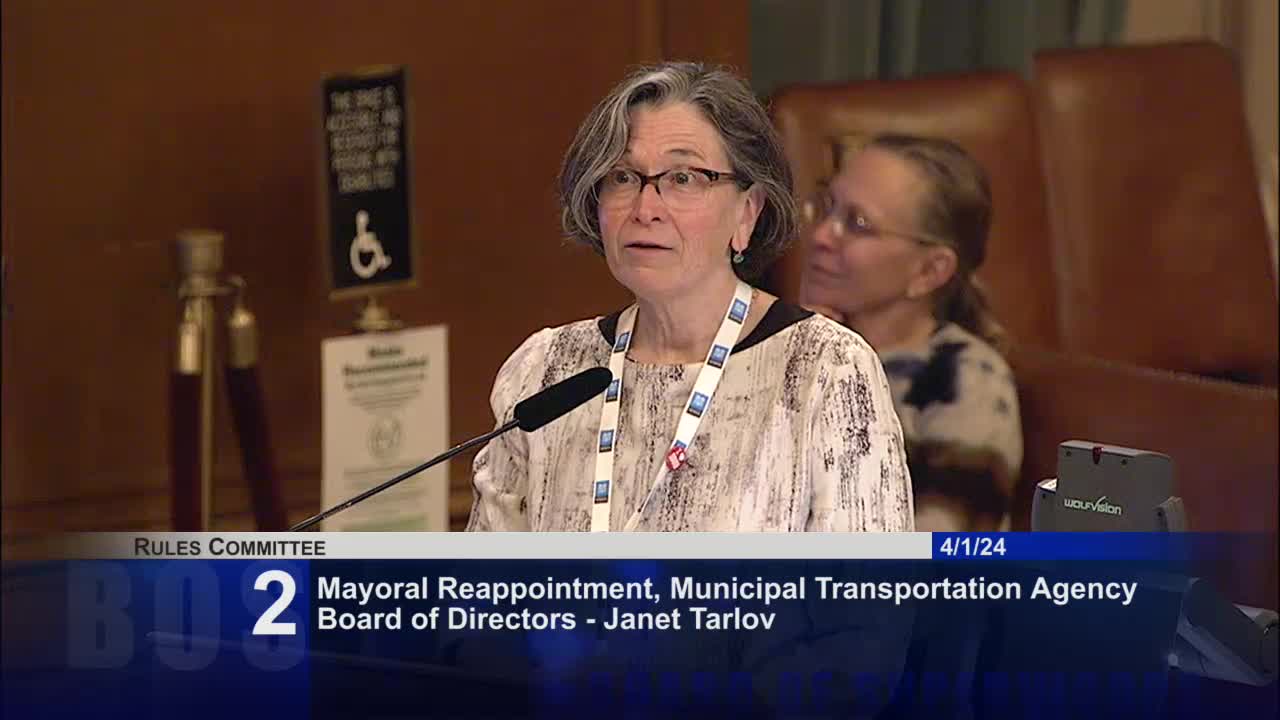MTA improves communication after community concerns about bus shelters
April 01, 2024 | San Francisco County, California

This article was created by AI summarizing key points discussed. AI makes mistakes, so for full details and context, please refer to the video of the full meeting. Please report any errors so we can fix them. Report an error »

In the heart of San Francisco, a recent government meeting illuminated the often-overlooked dynamics between city agencies and the community they serve. As the discussion unfolded, one participant shared a surprising revelation about the Municipal Transportation Agency (MTA), challenging the common perception of bureaucratic opacity.
“I went in with a general citizen's skepticism,” the speaker admitted, reflecting on their initial doubts about the MTA's transparency. However, after exploring the agency's website and reviewing its community outreach efforts, they found a different story. “I was pretty impressed,” they noted, contrasting the MTA's approach with their experiences with other city departments.
This newfound appreciation for the MTA's efforts was not just a personal victory; it highlighted a broader theme of advocacy and communication within city governance. The speaker emphasized the importance of helping residents voice their concerns, sharing an anecdote about a local merchant who felt the MTA was harming his business due to a newly installed bus shelter. Upon investigation, it turned out that the merchant had not been informed about the installation, a miscommunication that could have been avoided.
Through proactive engagement, the speaker was able to connect with MTA staff, leading to a resolution that involved relocating the bus shelter. This small but significant win underscored the potential for collaboration between city agencies and the community, fostering a spirit of problem-solving and responsiveness.
As the meeting concluded, it became clear that while challenges remain, the dialogue between San Francisco's residents and its agencies is evolving. The commitment to transparency and advocacy could pave the way for a more engaged and informed citizenry, ultimately enhancing the quality of life in the city.
“I went in with a general citizen's skepticism,” the speaker admitted, reflecting on their initial doubts about the MTA's transparency. However, after exploring the agency's website and reviewing its community outreach efforts, they found a different story. “I was pretty impressed,” they noted, contrasting the MTA's approach with their experiences with other city departments.
This newfound appreciation for the MTA's efforts was not just a personal victory; it highlighted a broader theme of advocacy and communication within city governance. The speaker emphasized the importance of helping residents voice their concerns, sharing an anecdote about a local merchant who felt the MTA was harming his business due to a newly installed bus shelter. Upon investigation, it turned out that the merchant had not been informed about the installation, a miscommunication that could have been avoided.
Through proactive engagement, the speaker was able to connect with MTA staff, leading to a resolution that involved relocating the bus shelter. This small but significant win underscored the potential for collaboration between city agencies and the community, fostering a spirit of problem-solving and responsiveness.
As the meeting concluded, it became clear that while challenges remain, the dialogue between San Francisco's residents and its agencies is evolving. The commitment to transparency and advocacy could pave the way for a more engaged and informed citizenry, ultimately enhancing the quality of life in the city.
View full meeting
This article is based on a recent meeting—watch the full video and explore the complete transcript for deeper insights into the discussion.
View full meeting
